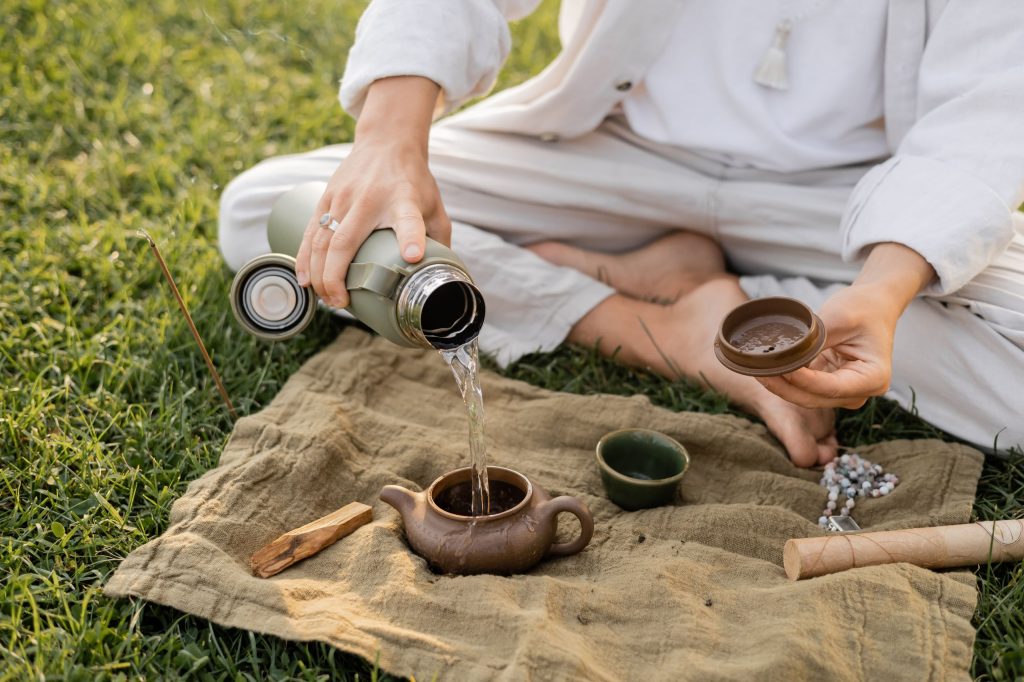In the noise and pace of modern life, many of us long for quiet moments—spaces where we can breathe, slow down, and reconnect with ourselves. Surprisingly, one of the simplest ways to create that space is through tea.
Tea, at its essence, is just leaves and water. But in practice, it can become a doorway: to mindfulness, to beauty, to peace. When we begin to treat the act of making tea not as a task, but as a ritual, it begins to nourish more than just the body. It nourishes the soul.
More Than a Drink
A ritual is different from a routine. A routine is something we do automatically; a ritual is something we do with intention. Making tea as a ritual means choosing your cup thoughtfully, pouring the water with awareness, listening to the gentle sound as it fills the pot, watching the leaves unfold like tiny underwater flowers. It is about being present.
This shift in approach transforms a simple beverage into a moment of reverence. It becomes a quiet ceremony between you and the world.
Creating a Personal Ritual
There is no one way to create a tea ritual—no strict rules, no required tools. That’s part of its beauty. It’s flexible, evolving with your needs, your moods, and your day. You might choose a traditional path, like preparing matcha in the Japanese style, or you might simply light a candle and sit by the window with your favorite herbal blend.
Here are a few elements to consider when shaping your own tea ritual:
- Time – Choose a time of day that you can protect, even if it’s just 10 minutes. Morning rituals can set the tone for mindfulness; evening ones can help you unwind and process the day.
- Space – Create a corner in your home that feels calm. It doesn’t need to be elaborate. A small tray, a clean table, maybe a single plant or a piece of cloth you like.
- Mindset – Enter your ritual without distraction. Put away your phone. Let it be a small pause in your day—free of productivity or multitasking.
- Tools – Select your teapot, cup, or kettle with care. Familiarity brings comfort, and beauty brings stillness. You don’t need a full set—just something that feels “right” in your hands.
- Sound – Many find that quiet music, wind chimes, or even the sound of boiling water adds a sense of ceremony. Silence works just as well.
- Scent – The aroma of tea leaves is an often-overlooked gift. Take time to breathe it in before and after steeping.
The Invisible Benefits
When tea becomes a ritual, it teaches us patience. It reminds us that beauty lives in simplicity. Over time, the act of making tea becomes a kind of anchor—a grounding moment in the rush of life.
Emotionally, it can bring stability and calm. Physically, certain teas support digestion, immunity, and relaxation. Spiritually, tea connects us with cultures and histories far beyond our own.
And perhaps most importantly, it creates space for slowness—something our fast-paced world rarely offers.
A Ritual for All Seasons
Whether you’re standing barefoot in your kitchen on a cold winter morning, or watching late summer sun fall across your balcony, tea can be your companion. Different teas for different seasons, different moods, different needs.
In Japan, there is a term: ichigo ichie — “one time, one meeting.” It reminds us that each moment is unique and unrepeatable. Your cup of tea today will never be exactly the same tomorrow. And that’s the point. That’s what makes it sacred.
Final Thoughts
Tea rituals are not about perfection or tradition for tradition’s sake. They are about presence. About claiming a small, beautiful pause in your day and filling it with intention.
Start simple. Let it evolve. And in time, you’ll find that the ritual itself begins to shape you—helping you become a little softer, a little quieter, a little more at peace.

